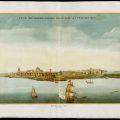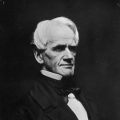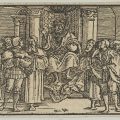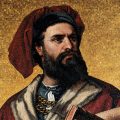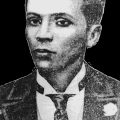Maximilian I of Mexico, born on July 6, 1832, at Schönbrunn Palace in Vienna, was a member of the Austrian royal family and the younger brother of Emperor Franz Joseph I. He had a remarkable career as the commander-in-chief of the Imperial Austrian Navy before being invited to become Emperor of Mexico by Napoleon III in 1863.
Maximilian’s journey to Mexico began in 1864 when he accepted Napoleon III’s offer and arrived in the country. His aim was to establish a Conservative government and bring stability to Mexico. However, despite his efforts, Liberals still held power in northwestern Mexico and parts of the Pacific coast.
During his time as Emperor, Maximilian sought to expand Austria’s territories. Through his own marriage, he secured vast lands, including the Netherlands. Additionally, he acquired Hungary and Bohemia through treaties and military pressure. Furthermore, he expanded Austria’s influence by marrying his son, Philip, to a member of the Spanish royal family, thus strengthening ties with Spain and the Spanish empire.
Despite his ambitions, Maximilian’s rule in Mexico faced numerous challenges. The country was embroiled in political turmoil and was divided between Conservative and Liberal factions. The Liberals, who opposed foreign intervention, fought against Maximilian’s government and held on to power in certain regions.
Maximilian’s reign came to a tragic end on June 19, 1867, when he was executed on a hill outside Querétaro. His death marked the collapse of the Imperial regime in Mexico and the restoration of the Republic. Maximilian’s execution served as a symbol of resistance against foreign intervention and played a significant role in shaping Mexico’s national identity.
Although Maximilian’s time as Emperor was short-lived, his impact on Austria’s territorial expansion and his role in Mexican history cannot be overlooked. His distinguished career in the Austrian Navy and his acceptance of the invitation to rule Mexico demonstrate his ambition and willingness to take on new challenges.
Maximilian I of Mexico was a member of the Austrian royal family who accepted an invitation to become Emperor of Mexico in 1863. Despite his efforts to establish a Conservative government, he faced opposition from Liberal factions, leading to his eventual execution in 1867. Maximilian’s reign left a lasting impact on Austria’s territorial holdings and played a significant role in shaping Mexico’s history.
What Did Maximilian Do For Mexico?
Maximilian, as Emperor of Mexico, implemented a number of initiatives and policies during his reign that aimed to modernize and improve the country. Here are some key actions taken by Maximilian for Mexico:
1. Economic Development:
– Encouraged foreign investment: Maximilian sought to attract foreign investors to stimulate economic growth in Mexico. He offered incentives to foreign businesses and implemented policies to promote industrialization.
– Infrastructure projects: Maximilian supported the construction of railways and telegraph lines, which played a crucial role in connecting different regions of Mexico and facilitating trade and communication.
2. Social Reforms:
– Education and healthcare: Maximilian prioritized education and healthcare reforms. He established schools and hospitals, particularly in rural areas, to provide access to education and medical services for all citizens.
– Land reforms: Maximilian introduced measures to address land tenure issues and attempted to redistribute land to peasants, aiming to improve their living conditions and reduce inequality.
3. Judicial and Administrative Reforms:
– Legal system overhaul: Maximilian aimed to reform the Mexican legal system, introducing new laws and establishing a more efficient and fair judiciary.
– Bureaucratic streamlining: Maximilian sought to improve the efficiency of government administration by reducing bureaucracy and corruption, making it easier for citizens to interact with the government and access public services.
4. Cultural and Artistic Patronage:
– Promotion of Mexican culture: Maximilian supported and encouraged Mexican arts, culture, and history, promoting national identity and pride.
– Architectural projects: Maximilian sponsored the construction and restoration of various iconic buildings and landmarks, such as the Chapultepec Castle in Mexico City.
It is important to note that Maximilian’s rule was short-lived, as he faced significant opposition from Mexican Liberals who did not recognize his authority. Ultimately, his reign ended in 1867 when he was captured and executed by the forces of the Mexican republic.
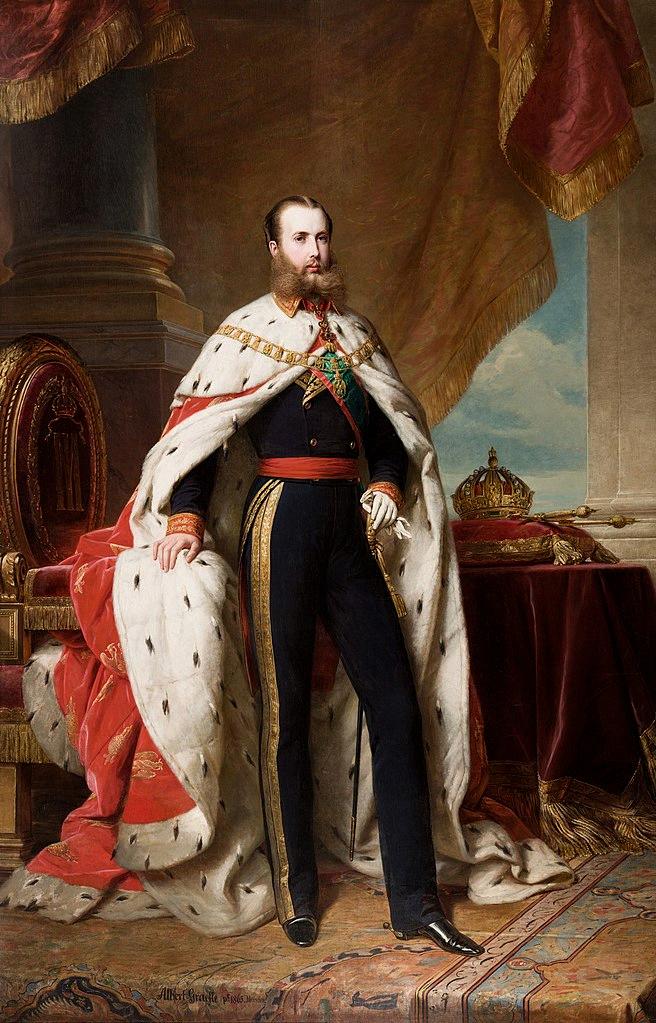
What Happened To Emperor Maximilian Of Mexico?
Emperor Maximilian of Mexico faced a tragic fate as he was executed on June 19, 1867. The execution took place on a hill situated outside the city of Querétaro. Maximilian, born as Ferdinand Maximilian Joseph, was an Austrian archduke who was installed as the Emperor of Mexico by French forces in 1864.
Here are the key details surrounding the execution of Maximilian:
1. Background: Maximilian’s rule in Mexico was controversial and short-lived. He was brought to power by Napoleon III of France, who sought to establish a French-backed monarchy in Mexico. Maximilian’s reign faced significant opposition from Mexican nationalists, led by Benito Juarez.
2. Capture and Trial: As the French forces withdrew from Mexico in 1866, Maximilian was left vulnerable to the growing strength of Mexican nationalists. He was captured by Juarez’s forces in May 1867 and was subsequently put on trial for various charges, including treason.
3. Trial Proceedings: Maximilian’s trial lasted for several weeks and involved a commission composed of Mexican military officers. Despite efforts made by European powers to save him, the commission found Maximilian guilty and sentenced him to death.
4. Execution: On June 19, 1867, Maximilian, along with two of his loyal generals, Miguel Miramón and Tomás Mejía, was executed by a firing squad. The execution took place on the Cerro de las Campanas (Hill of the Bells) in Querétaro.
5. Legacy: Maximilian’s execution marked the end of his brief and ill-fated reign in Mexico. His death had significant repercussions both in Mexico and Europe. The event further strained relations between Mexico and European powers, and it served as a symbol of Mexican nationalism and resistance against foreign intervention.
Emperor Maximilian of Mexico was executed on June 19, 1867, on a hill outside Querétaro. His execution marked the culmination of a turbulent period in Mexican history and left a lasting impact on the country’s national identity.
Why Was Maximilian Important?
Maximilian was an important figure in European history due to his significant political and territorial achievements. He greatly expanded the traditional Austrian holdings, acquiring vast lands through various means. Here is a detailed explanation of his importance:
1. Acquiring the Netherlands: Maximilian secured the Netherlands through his own marriage. This marriage alliance not only expanded the Austrian territories but also provided access to the valuable trade routes and resources of the Dutch region.
2. Treaty and military pressure in Hungary and Bohemia: Maximilian used both diplomatic negotiations and military force to secure Hungary and Bohemia. These regions were strategically important, providing access to the eastern lands and resources of Europe.
3. Marriage alliance with Spain and the Spanish empire: Maximilian’s son, Philip, married the Spanish princess and heir to the Spanish empire, thus solidifying a powerful alliance between Austria and Spain. This marriage brought Spain and its vast overseas territories under the Habsburg rule, making the Habsburg dynasty one of the most influential in Europe.
4. Expansion of Austrian territories: Maximilian’s efforts resulted in the expansion of the traditional Austrian holdings. This expansion brought immense wealth, resources, and power to the Habsburgs, establishing them as a dominant force in European politics.
Maximilian’s importance lies in his successful expansion of the Austrian holdings through marriage alliances, treaties, and military actions. His actions secured the Netherlands, Hungary, Bohemia, and Spain, greatly increasing the power and influence of the Habsburg dynasty in Europe.
Is Maximilian Spanish?
Maximilian I was not Spanish. He was born on July 6, 1832, in Schönbrunn Palace, Vienna, which was part of the Austrian Empire at the time. Maximilian was actually a younger brother of Emperor Franz Joseph I of Austria. Although he had a distinguished career as the commander-in-chief of the Imperial Austrian Navy, Maximilian’s connection to Spain comes from his role as Emperor of Mexico.
In 1864, Maximilian was installed as the Emperor of Mexico by French forces, who had invaded the country. This was a result of political maneuvering and the French desire to establish a client state in Mexico. Maximilian’s reign as Emperor of Mexico, however, was short-lived and ended in tragedy. He was captured by Mexican forces during the French intervention in Mexico and was executed on June 19, 1867, at the Cerro de las Campanas in Santiago de Querétaro, Mexico.
To summarize:
– Maximilian I was not Spanish, but rather from the Austrian Empire.
– He became Emperor of Mexico through French intervention.
– His reign in Mexico was short-lived and ended in his execution.
Conclusion
Maximilian I of Mexico was a complex and intriguing figure in history. Born into the Austro-Hungarian royal family, he embarked on a remarkable journey when he accepted Napoleon III’s invitation to become Emperor of Mexico.
During his short reign, Maximilian faced numerous challenges, including opposition from liberal forces in Mexico and the ongoing American Civil War. Despite his efforts to establish a conservative government and bring stability to the country, his rule was ultimately met with resistance.
Maximilian’s execution in 1867 marked the end of his ambitious endeavor to establish himself as the ruler of Mexico. However, his legacy extends beyond his ill-fated reign. Prior to his time in Mexico, Maximilian had already achieved notable accomplishments, such as his successful career as commander-in-chief of the Imperial Austrian Navy.
Furthermore, Maximilian’s marriage to Charlotte of Belgium expanded Austria’s territorial influence, securing alliances and connections with countries like the Netherlands, Hungary, Bohemia, Spain, and the Spanish empire.
While Maximilian’s time as Emperor of Mexico was fraught with difficulties and ultimately ended in tragedy, his story serves as a reminder of the complexities and challenges faced by leaders in the pursuit of power and influence.


